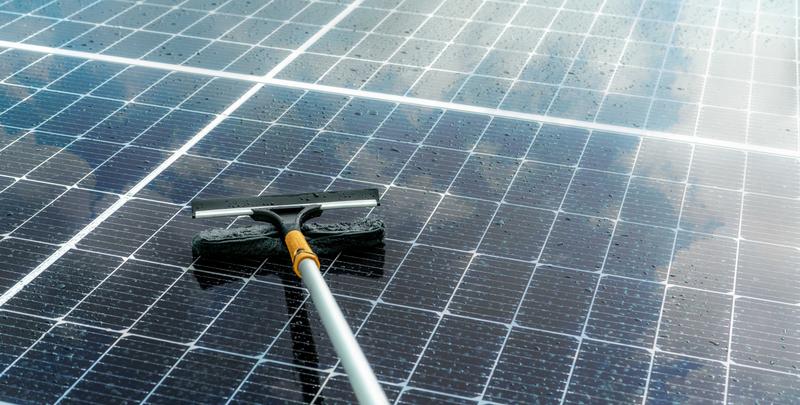
When you’re hunting for a substantial-efficiency Solar Panel Cleaning brush, Expert-grade
Why Solar Panel Cleansing Issues
Solar panels seize Vitality at their most effective when clear. Dust, pollen, chook droppings, and smog lessen performance—from time to time by twenty% or even more. Standard cleansing assists keep optimum efficiency, increase panel daily life, and guard your expenditure.
Primary Advantages:
- Improved Electricity output
- Reduce electricity costs
- Prolonged panel lifespan
- Lowered risk of micro‑cracks because of thermal hotspots
Different types of Solar Cleansing Resources
Choosing the ideal Device relies on your setup, drinking water availability, and wished-for ease. Categories include:
- Drinking water‑run photo voltaic brush techniques
- Transportable photo voltaic panel cleansing kit bundles
- Pure h2o cleaning systems
- Rotary photo voltaic brushes and extension poles
Water Run Solar Brush Techniques
These brushes connect with a drinking water supply and spin even though dispensing h2o, combining cleaning and lubrication in one move. The result: spotless panels without the need of scratching.
Crucial Options:
- Built-in drinking water feed through the brush head
- Soft bristles Safe and sound for glass surfaces
- Rotary motion cuts down guide exertion
- Mounts on extension poles for rooftop accessibility
Transportable Photo voltaic Panel Cleaning Package
A whole
- Brush head (set or rotating)
- Extension pole (adjustable lengths as much as 6 m)
- Hose adapters or quick‑link fittings
- Pure‑h2o tank or filtration method
- Gentle microfiber towels or squeegees
- Non‑abrasive cleansing Alternative (if authorized)
Advantages of All-in-One particular Kits:
- Commence cleaning with negligible setup
- Compact for storage or travel
- Appropriate with household or commercial photo voltaic arrays
Pure Water Photo voltaic Cleaning Units
These programs purify neighborhood h2o—taking away minerals and dirt—so it gained’t go away scale or streaks. Pure drinking water empowers Expert-quality results without the need of chemical substances.
How It really works:
- Pretreatment filtration (sediment, carbon, ion exchange)
- Ultimate deionization or reverse‑osmosis phase
- Filtered h2o circulated by means of brush for cleansing
- Residue‑free drying—no spots or streaks left driving
Rotary Photo voltaic Brush & Extension Poles
For big photo voltaic arrays or business use, an influence-rotating head over a telescoping extension pole makes cleansing efficient and safe.
Advantages:
- Much less Actual physical exertion, speedier coverage
- Reach roofs and floor‑mounted panels simply
- Adjustable shaft lengths for varying angles
- Common rapid‑join tricks for equipment
Focus on Basic safety & Very best Tactics
Cleaning solar panels will involve heights and slippery surfaces—security to start with:
- Use non‑conductive extension poles
- Keep away from pressure washers that could crack glass
- Work early or late to avoid glare and warmth
- Dress in grips and slip-resistant sneakers
- Notice area h2o‑use procedures or restrictions
Stage‑by‑Move Cleaning Schedule
- Turn off the photo voltaic inverter or ensure program is deactivated
- Rinse panels with minimal‑pressure h2o
- Use a brush (or photo voltaic brush kit) with water feed
- Scrub gently in overlapping, linear passes
- Rinse extensively with cleanse drinking water
- Dry with microfiber squeegee or soft towel—provided that desired
Choosing the Right Photo voltaic Panel Cleansing Resource
Take into consideration your set up and also your water access:
Routine maintenance & Care Recommendations
- Flush hose and brush soon after Every use
- Retail outlet dry, clean, and from UV publicity
- Replace worn brush heads—and Check out bristle softness
- Inspect seals and connectors for leaks
- Switch or thoroughly clean filters in pure‑drinking water units routinely
Eco-Friendly Cleaning Positive aspects
Suitable cleaning prolongs solar panel efficiency and lowers Electrical power squander. Utilizing water on your own—devoid of soaps or substances—helps preserve nearby ecology and avoids runoff pollution.
How Solar Panel Cleaning Impacts ROI
Wise upkeep employing excellent brushes and kits retains process performance topped up, lessening the payback interval and maximizing Electrical power generate over time.
Cost Considerations & Value
- H2o‑driven solar brushes are Expense-efficient and durable
- Pure h2o devices have to have upfront financial commitment but present reliable, place‑totally free cleansing
- Rotary brush kits Raise productiveness—worth it for giant installations
- Do-it-yourself kits conserve labor costs; Experienced expert services Value much more but free up your time and energy
Widespread Makes use of of Photo voltaic Panel Brushes
- Residential rooftops
- Professional solar farms
- RV or cell installations
- Solar carports
- BIPV segments (building‑built-in photovoltaics)
solar panel cleaning kit
Customer Recommendations & Use Instances
“This photo voltaic panel cleaning brush manufactured a noticeable variance inside of minutes—dust long gone, no streaks, and our output improved!”
“Upgrading into a h2o‑powered solar brush saved several hours of scrubbing. Combined with a pure drinking water procedure, the panels looked brand-new.”
FAQs About Solar Panel Cleaning
How frequently should really panels be cleaned?
Every single six to twelve months, according to your local climate—much more typically in dusty or pollen-major regions.
Can rain clear photo voltaic panels?
Rain allows but doesn’t get rid of Grime buildup or movie levels—handbook cleansing yields better functionality.
Am i able to use faucet h2o?
Faucet h2o may perhaps leave mineral residue. A
Can cleansing damage panels?
Provided that abrasive tools or higher-stress washers are employed. Constantly use comfortable bristles, very low-tension, and abide by company rules.
Professional Guidelines for Photo voltaic Panel House owners
- Cleanse early morning or evening to avoid thermal stress
- Monitor output details—if general performance drops, clean up panels
- Retain panels angled—standing drinking water promotes algae growth if remaining way too extended
- Rotate brush heads periodically to maintain even have on
Summary: A Brush for Every Have to have
Whether you’re on the lookout for a value-efficient
Investigate the complete line of brushes and extras created especially for photo voltaic cleansing at Water Powered Solar Brush suppliers, and elevate your photo voltaic servicing routine these days.